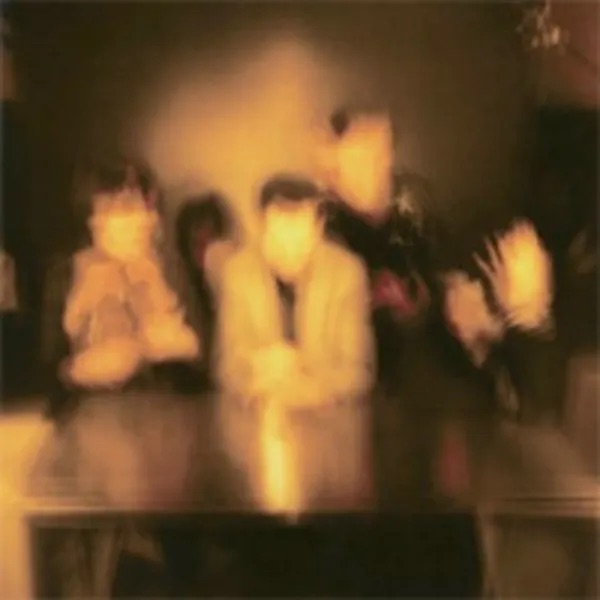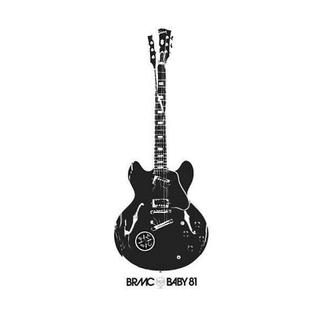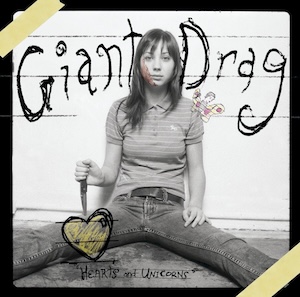
Post-Punk
2009
The Horrors arrived at a time of mass upheaval on the UK indie circuit . By the mid-2000s, the trajectory of the cross-Atlantic garage rock revival had bifurcated into two halves. The first comprised the acts that seemed happy to soldier on with their best Strokes tribute band impressions; Dirty Pretty Things, Babyshambles, Kaiser Chiefs, Arctic Monkeys, Fratellis, Razorlight and many others took this route. The other half were drawn into an increasingly electronic direction; the Klaxons, Editors, White Rose Movement and the venerable Bloc Party could be found here.
The Horrors didn’t fit either of these categories very well. They didn’t have the expensively assembled thrift-store looks of The Strokes. If anything, their signature look of bowl-cut hair and skinny jeans had them resembling a garish cross between the Ramones and celebrated sitcom perv Howard Wolowitz from The Big Bang Theory.
Their self-titled 2007 debut LP didn’t fit the bill either; it was a fairly tame collection of psychobilly rockers like ‘Count in Fives’ that checked the right boxes (love of the Cramps and Screaming Lord Sutch), but committed the cardinal sin of lacking hooks, and of sounding like a poor man’s Eighties Matchbox B-Line Disaster, an ‘00s UK psychobilly act that proved a little too extreme for the “Chelsea Dagger” crowd.
But all of that would change with Primary Colours. With Portishead‘s Geoff Barrow behind the mixing desk, the band’s original garage and psychobilly influences have mostly fallen away in favour of My Bloody Valentine’s tremolo-bending soundscapes and, as the out-of-focus album art suggests, the post-punk gloom of Pornography-era Cure.
“Mirror’s Image” is Side 1, Track 1 and the first single . It sets the scene for the new-look Horrors, with guitarist Joshua Hayward generating huge waves of fuzz from his mammoth effects stack. During the recording of this album, Hayward became obsessed with guitar effects and put his physics degree to good use by building several custom effects just for this record.
His tweaks give the record a signature sound that blends guitar cacophony with clear nods to ‘80s post-punk. “Mirror’s Image” and the title track will grab anyone jonesing for a shoegaze fix, while the Love Will Tear Us Apart-indebted “Who Can Say” is a standout pop single, right down to Faris Badwan’s spoken-word bridge that takes from the oldies’ favourite “She Cried” (Jay and the Americans, 1962). The change in his vocal style on this album makes the record feel as though it’s from a completely different band. The shrieks and shouts of Badwan’s Lux Interior cosplay phase are gone, except on the spirited ‘New Ice Age’. In its place is a ghostly Alan Vega-like baritone that he no doubt settled upon after recording a cover of Suicide’s ‘Shadazz’ on a 2008 split EP with Nic Void.
That’s the voice you’ll hear on the 8-minute closer “Sea Within A Sea”, which weaves Kraftwerk-ian synths and Can-esque Krautrock into a masterful piece de resistance that frankly, causes the rest of the album to mostly pale into insignificance. It’s a track that leaves you thinking long after the final synth loops have faded out into silence.
One final tip of the hat goes to “Scarlet Fields”, whose gorgeous bassline has been lifted wholesale from Grauzone’s Eisbaer (1980). Far from being a frigid post-punk track, you can hear Hayward’s bendy guitars distending and serrating as Badwan’s sings 'Although // I know // You won’t be here for long’. These are words that could ultimately be applied to Primary Colours as well, as the band would reinvent their sound yet again on their 2011 followup Skying, largely leaving shoegaze behind.
While Primary Colours isn’t a purist’s shoegaze album, its sweeping scope and masterful execution did much to bring the genre back into the indie rock conversation, at least briefly. By the end of the 2000s, indie was already losing ground to alternatives like electro-house, synthwave and noise. In some ways then, it’s fitting that a decade bookended by the carefree Is This It? on one end would close with the pensive Primary Colours on the other.

